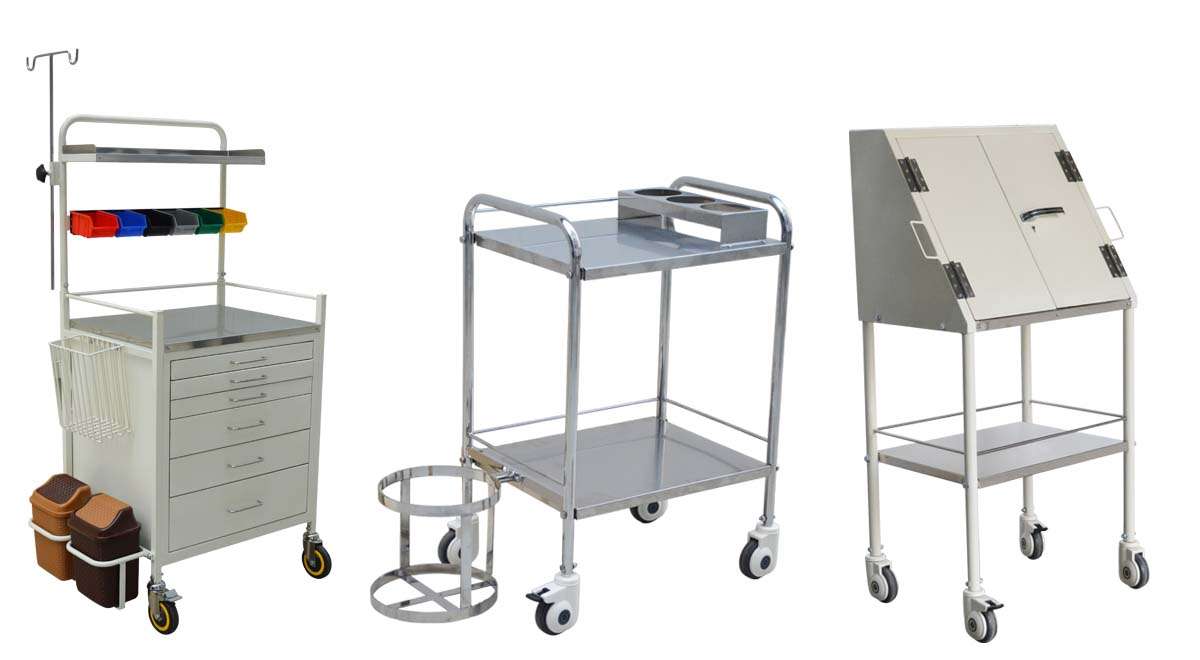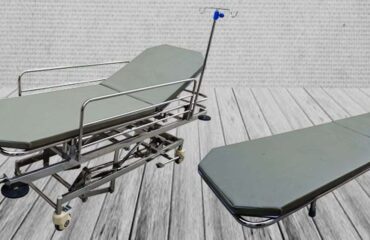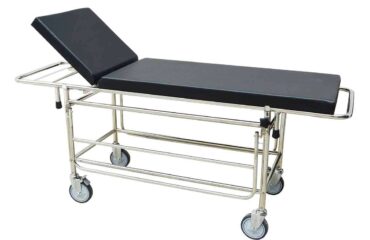A hospital trolley (also known as a medical trolley, clinical trolley, or hospital cart) is a mobile unit used in healthcare facilities to transport medical equipment, supplies, and sometimes patients within the hospital. These trolleys are vital in supporting healthcare professionals by making necessary tools and items easily accessible and mobile. There are various types of hospital trolleys, each tailored for specific functions.

Types of Hospital Trolley
There are many types of hospital trolleys, each designed for a specific medical function or department. Below is a detailed breakdown of the most common types, including their features, uses, and benefits:
Crash Cart (Emergency Trolley):
Purpose: Used in emergencies such as cardiac arrest or trauma.
Key Features:
- Multiple drawers organized by urgency of use (e.g., airway, breathing, circulation).
- Includes defibrillator, emergency drugs, IV supplies, airway management tools.
- Equipped with wheels and brakes for quick mobility.
Benefit: Enables fast, organized, life-saving response during critical events.
Medication Trolley
Purpose: Used to distribute medications during rounds.
Key Features:
- Lockable drawers for controlled substances.
- Color-coded bins or trays for different drugs or patients.
- May include a writing surface or electronic tablet holder.
Benefit: Improves accuracy and safety in drug administration.
Dressing Trolley
Purpose: Used for wound care, dressing changes, and minor procedures.
Key Features:
- Two or more stainless steel trays/shelves.
- Space for sterile dressings, antiseptics, scissors, gloves, and tape.
- Easy to sterilize and move.
Benefit: Keeps everything sterile and within reach during dressing procedures.
Anesthesia Trolley
Purpose: Used by anesthetists in operating rooms.
Key Features:
- Holds anesthetics, syringes, IV drugs, and airway tools.
- Often includes gas cylinder holders and a waste bin.
- Compact and sterile-friendly.
Benefit: Centralizes all anesthetic supplies in one place for quick access.
Instrument Trolley
Purpose: Carries surgical instruments during procedures.
Key Features:
- Usually two or three stainless steel trays.
- Simple design for easy cleaning and sterilization.
- Sometimes adjustable height.
Benefit: Helps maintain sterile field and keeps instruments organized.
Food Trolley
Purpose: Transports and serves meals to patients.
Key Features:
- Insulated compartments to keep food hot or cold.
- Often has trays and serving tools.
- May include warming compartments.
Benefit: Ensures hygienic, temperature-controlled food delivery.
Linen Trolley
Purpose: Carries clean or dirty linens within the hospital.
Key Features:
- Divided compartments for soiled and clean linens.
- May have removable bags or bins.
- Often covered to avoid contamination.
Benefit: Keeps linen management organized and reduces infection risk.
Patient Transport Trolley (Stretcher Trolley)
Purpose: Transports patients between departments (e.g., ER to radiology).
Key Features:
- Adjustable height and backrest.
- Side rails for patient safety.
- IV pole and oxygen cylinder mount.
Benefit: Offers safe and comfortable transport for patients.
IV Trolley (Infusion Trolley)
Purpose: Used to administer and transport IV equipment.
Key Features:
- Hooks or poles for hanging IV bags.
- Trays for syringes, cannulas, and saline.
- Compact and mobile.
Benefit: Convenient setup for intravenous therapy at bedside.
Utility Trolley
Purpose: General-purpose trolley for tools, equipment, or paperwork.
Key Features:
- Open shelves or trays.
- Lightweight and easy to maneuver.
- Optional baskets or bins.
Benefit: Versatile use in any hospital area (e.g., wards, labs, or maintenance).
Biohazard Trolley (Waste Collection Trolley)
Purpose: Collection and transport of biomedical waste.
Key Features:
- Colored bins (usually red/yellow) for different waste types.
- Hands-free lid or pedal operation.
- Leak-proof and easy to sanitize.
Benefit: Ensures safe, hygienic disposal of infectious materials.
Benefits of Hospital Trolley
Hospital trolleys offer numerous benefits that directly support healthcare delivery, improve workflow efficiency, and enhance patient safety. Here’s a detailed look at the key benefits of hospital trolleys:
Enhanced Mobility and Accessibility
- Portable Storage: Hospital trolleys are on wheels, allowing healthcare staff to easily move medical supplies, equipment, or medications directly to where they are needed.
- Time Efficiency: Reduces the need for staff to return to storage areas, saving time in critical situations.
Improved Organization
- Trolleys come with compartments, drawers, or trays that help sort and store medical items in a structured manner.
- Each trolley can be customized or labeled for specific purposes (e.g., dressing trolley, emergency trolley), making it easy to find the needed item quickly.
Supports Emergency Response
- Crash carts (a type of emergency trolley) are essential during code blue situations (e.g., cardiac arrest), carrying life-saving equipment and medication in an organized and immediately accessible way.
- Quick access to tools reduces delays in emergency treatment.
Increases Patient Safety
- Secure storage: Medication trolleys often have locks to prevent unauthorized access to controlled substances.
- Reduces the chances of medication errors by keeping drugs in designated and labeled sections.
- Ensures sterile supplies are stored separately and cleanly.
Reduces Staff Fatigue
- By making medical items mobile and readily available, trolleys reduce the physical strain on healthcare workers.
- Staff don’t have to make multiple trips across departments or lift heavy loads manually.
Promotes Hygiene and Infection Control
- Many hospital trolleys are made from non-porous, easy-to-clean materials like stainless steel or high-grade plastic.
- They can be sterilized regularly, minimizing the risk of cross-contamination and hospital-acquired infections (HAIs).
Customizable for Specific Roles
Hospital trolleys can be tailored with accessories like:
- IV poles
- Oxygen cylinder holders
- Monitor mounts
- Waste bins
This makes them versatile for use in wards, ICUs, operating rooms, ERs, and outpatient clinics.
Cost-Effective Solution
- By consolidating supplies and improving workflow, trolleys reduce operational delays, help with inventory control, and optimize staff productivity—leading to better resource management and cost savings over time.
Facilitates Better Patient Care
- Having everything on hand allows medical staff to focus more on the patient and less on logistics.
- Useful in bedside procedures, dressing changes, and medication rounds—minimizing disruption to the patient.
Standardization and Compliance
- Helps hospitals standardize procedures by organizing tools and medications consistently across departments.
- Supports compliance with safety protocols and regulations regarding medication handling and patient care.


